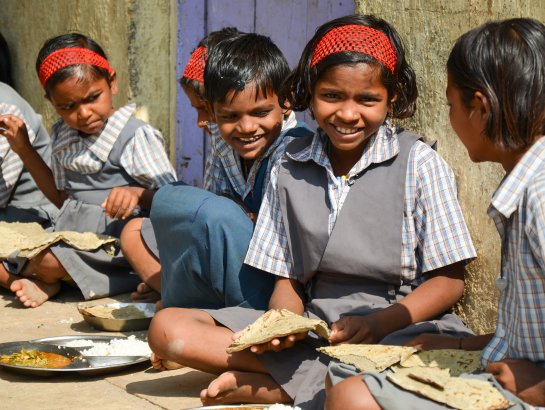Delivery of iron pearl millet is poised to scale up to reach even more farmers and consumers in India. Currently, more than 360,000 people in the country are growing and consuming iron pearl millet, but the goal is for this biofortified crop to reach more than one million households by 2018. In a meeting recently hosted by the International Crops Research Institute for the Semi-Arid Tropics (ICRISAT) HarvestPlus and partners in the iron pearl millet program in India met to review progress made and develop future priorities for the crop’s scaling up.
A recently published study validates the current approach to promoting the crop in India. The approach targeted poor farming households right from the start, and views adoption by such households as key to improving nutrition in a country where nearly three-quarters of all children aged under 5 suffer from iron deficiency. Ekin Birol, the Head of Nutrition at HarvestPlus, is a co-author of the study.
“The results reveal that poorer farming households, located in drier, drought prone areas, are more likely to grow pearl millet,” says Birol “Since such households have fewer means to access nutritious foods, substitutions of these households’ current pearl millet varieties with their higher iron counterparts would improve these households’ nutrition security.”
The study also underscores the importance of engaging the commercial seed sector. Birol notes that regardless of socio-economic status, “farming households in India acquire seeds from commercial vendors. Therefore, delivering iron pearl millet seeds through the commercial system would ensure that all pearl millet farming households can be reached with iron pearl millet varieties.” At present, HarvestPlus works in partnership with more than 70 organizations drawn from government, business, and civil society to promote iron pearl millet in India.
Another important recommendation of the study is for the iron pearl millet program to include more hybrid varieties. There is currently only one commercialized hybrid, Shakti-1201, alongside the open pollinated Dhanashakti, the first-ever iron pearl millet variety in the country.
“Less privileged households (who are more likely to have lower quality diets) are more likely to grow popular hybrids (popular defined as more frequently grown),” says Birol. Therefore, these varieties should be targeted for biofortification.”
Indeed, several hybrid candidates developed by ICRISAT with even more iron content and grain yield are currently undergoing testing in India. Two varieties should be officially released to farmers within the next year.
Watch Indian farmers in Maharashtra speak about their experience with iron pearl millet.
